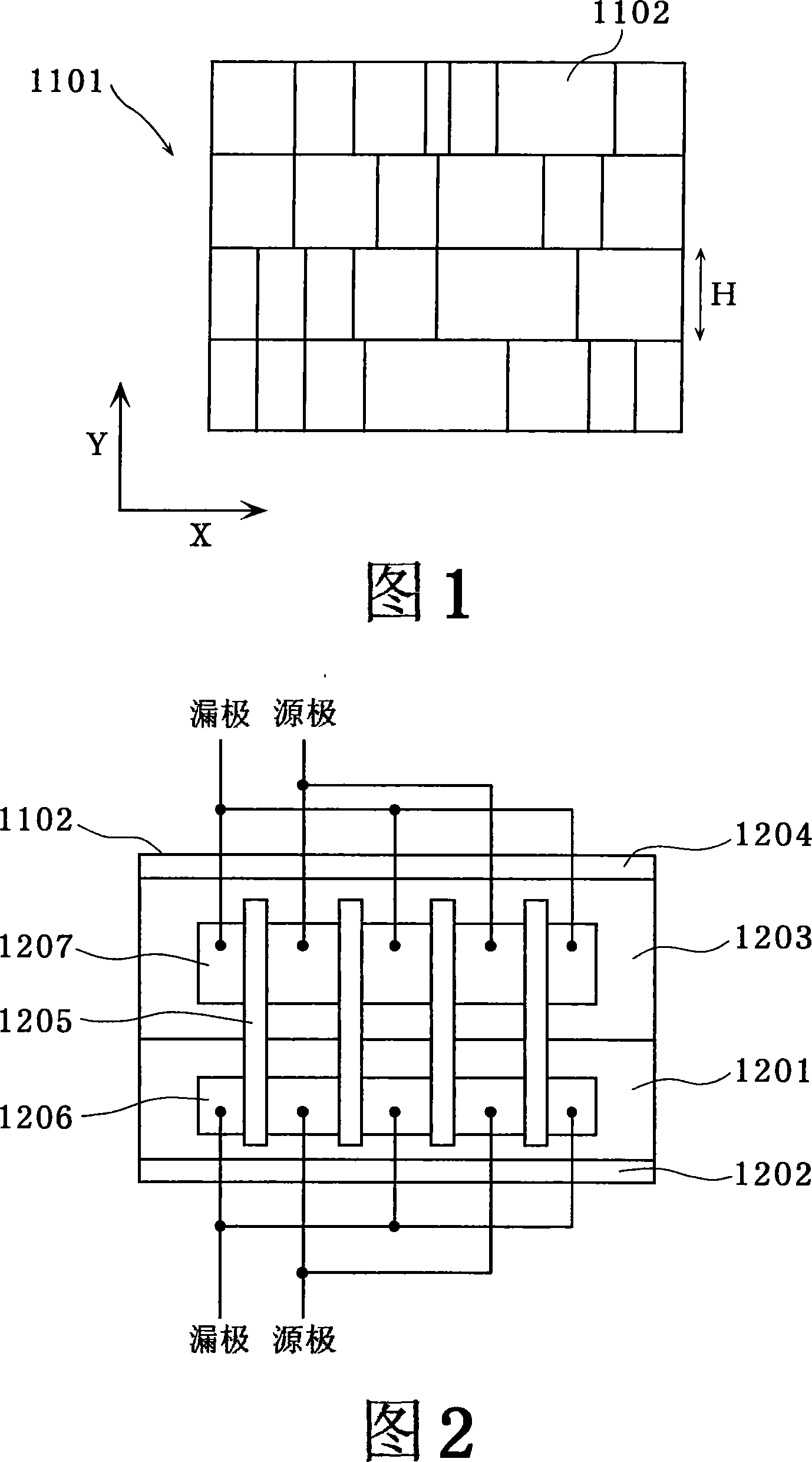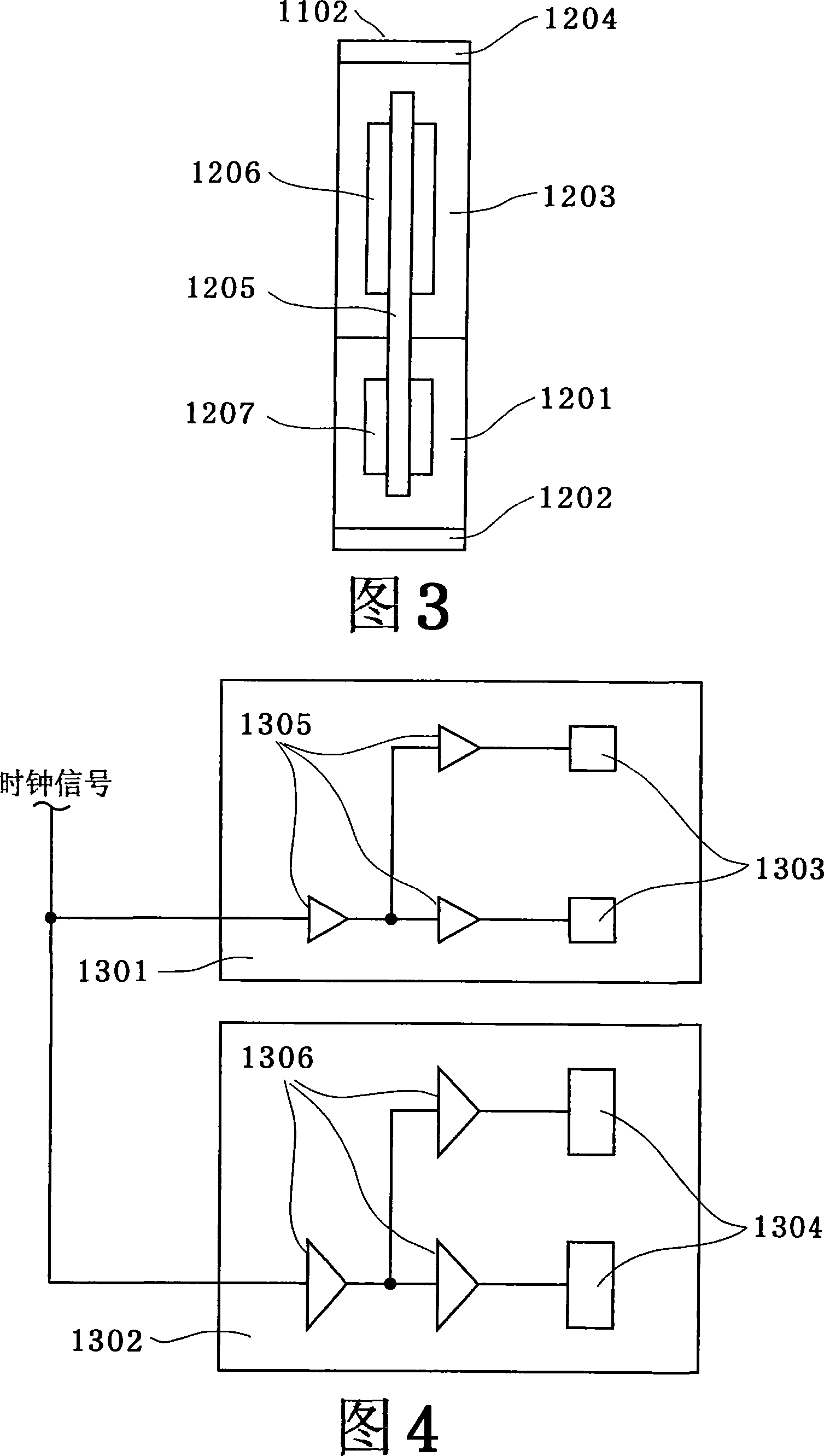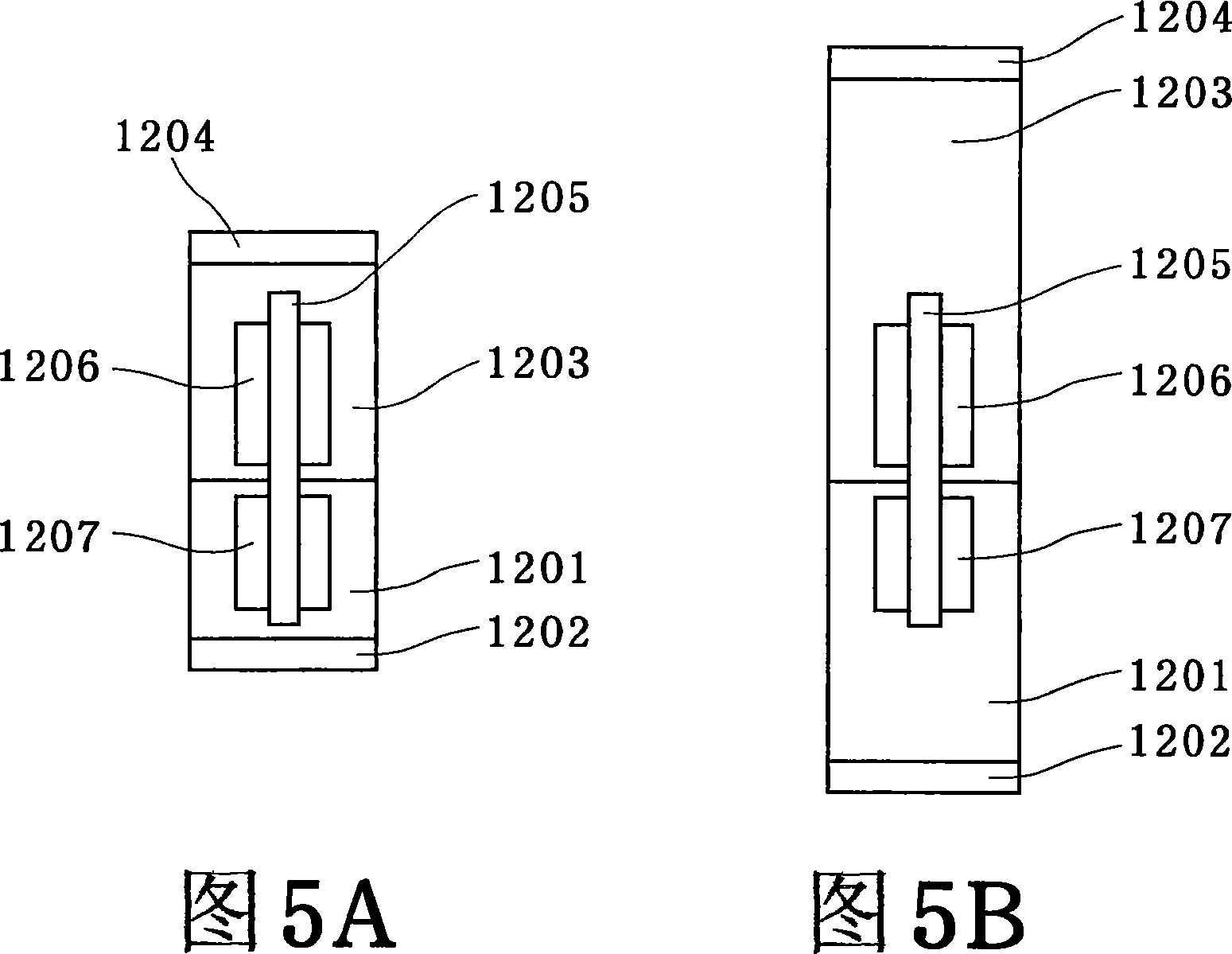Semiconductor integrated circuit
A technology of integrated circuits and semiconductors, applied in the direction of semiconductor devices, circuits, semiconductor/solid-state device components, etc., can solve the problems of increasing clock skew, different transistor delay characteristics, and different transistor characteristics, etc., to reduce clock offset effect
- Summary
- Abstract
- Description
- Claims
- Application Information
AI Technical Summary
Problems solved by technology
Method used
Image
Examples
Embodiment 1
[0047] 7 is a plan view of a design example of a standard cell semiconductor integrated circuit according to Embodiment 1 of the present invention.
[0048] Four unit blocks 101 to 104 are shown in FIG. 7 . Each of the cell blocks 101 to 104 has a plurality of columns of standard cells, and in these columns of standard cells, a plurality of standard cells 105 to 110 are arranged in the direction of the columns. In addition, a plurality of standard cells 105 and 109 having low cell heights are arranged in the cell block 101 . A plurality of standard cells 106 and 110 having a higher cell height than standard cells 105 and 109 in the cell block 101 are arranged in the cell block 102 . A plurality of standard cells 107 and 108 having a low cell height are arranged in the cell blocks 103 and 104 , and the cell height of the plurality of standard cells 107 and 108 is the same as that of the standard cell 105 in the cell block 101 .
[0049] Moreover, the column directions of all ...
Embodiment 2
[0064] 11A and 11B are layout diagrams of clock standard cells in the semiconductor integrated circuit according to the second embodiment of the present invention. FIG. 11A is a schematic diagram of a standard cell 109 in the cell block 101 in FIG. 7 , and FIG. 11B is a schematic diagram of a standard cell 110 in the cell block 102 in FIG. 7 . In addition, in FIGS. 11A and 11B , parts corresponding to those in FIGS. 8A and 8B are assigned the same reference numerals, and description thereof will be omitted here. FIGS. 11A and 11B are the same as FIGS. 8A and 8B , showing an example in which the standard cells 109 and 110 are inverting cells as represented by the circuit of FIG. 9 .
[0065] The metal wiring 401 of the first metal wiring layer is shown in FIGS. 11A and 11B . In FIGS. 11A and 11B , the source 501 of the N-channel transistor 203 is connected to the P-type diffusion region 207 for providing substrate power through the contact 402 and the metal wiring 401 of the f...
Embodiment 3
[0076] 13A and 13B are layout diagrams of clock standard cells in the semiconductor integrated circuit according to Embodiment 3 of the present invention. In addition, in FIGS. 13A and 13B , parts corresponding to those in FIGS. 8A and 8B are denoted by the same reference numerals, and description thereof will be omitted here. FIGS. 13A and 13B are the same as FIGS. 8A and 8B , and the standard cell shows an example of the inverting cell represented by the circuit of FIG. 9 .
[0077] The cell height of the standard cell 702 of FIG. 13B is higher than that of the standard cell 701 of FIG. 13A . Furthermore, in standard cell 702 in FIG. 13B , dummy gate wiring 703 is arranged on P well region 201 and N well region 202 , respectively. And, the distance 705 in the gate length direction between the gate electrode 209 in the standard cell 702 and the dummy gate wiring 703 is twice the distance 704, which is the distance 704 between the gate electrode 209 and the standard cell boun...
PUM
 Login to View More
Login to View More Abstract
Description
Claims
Application Information
 Login to View More
Login to View More - R&D
- Intellectual Property
- Life Sciences
- Materials
- Tech Scout
- Unparalleled Data Quality
- Higher Quality Content
- 60% Fewer Hallucinations
Browse by: Latest US Patents, China's latest patents, Technical Efficacy Thesaurus, Application Domain, Technology Topic, Popular Technical Reports.
© 2025 PatSnap. All rights reserved.Legal|Privacy policy|Modern Slavery Act Transparency Statement|Sitemap|About US| Contact US: help@patsnap.com



